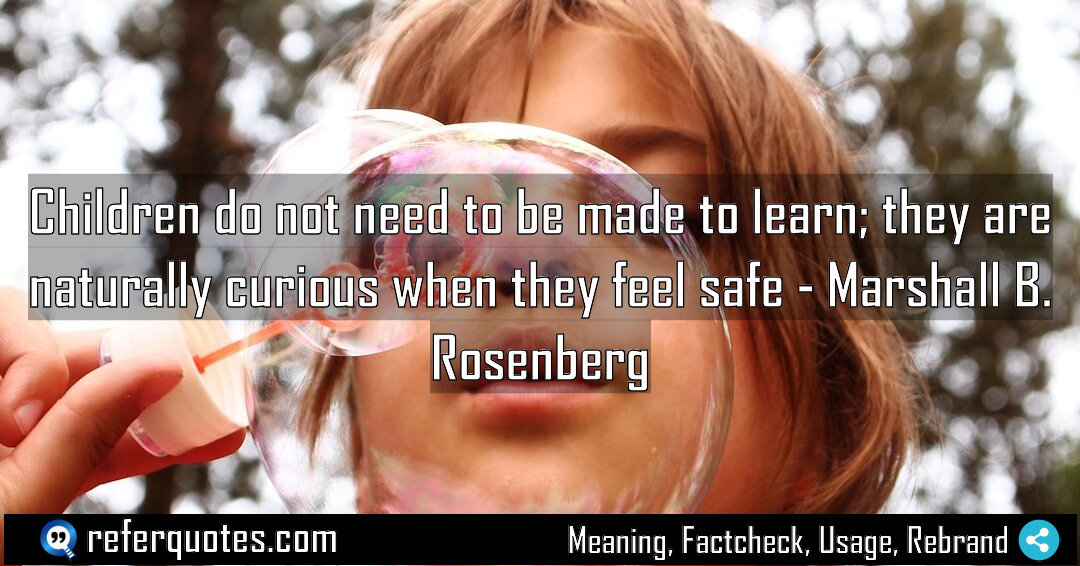You know, when Marshall Rosenberg said “Children do not need to be made to learn,” he was onto something huge. It’s about trusting that a child’s natural curiosity is the real engine for learning, and our main job is to create a safe space for it to flourish. It completely reframes the entire dynamic of parenting and education.
Share Image Quote:Table of Contents
Meaning
The core message is that learning is a natural, hardwired human drive, not something that needs to be forced. The real prerequisite is psychological safety.
Explanation
Look, I’ve seen this play out so many times. We get so focused on the curriculum, the milestones, the “teaching,” that we forget the fundamental fuel: curiosity. And that curiosity? It’s incredibly fragile. It shuts down under threat, under pressure, under fear of getting it wrong. Rosenberg’s genius was connecting safety to learning. When a child feels safe—truly safe, emotionally and physically—their mind opens up. They ask “why,” they tinker, they explore. They’re not performing for a grade; they’re engaging with the world. Our role shifts from being a taskmaster to being a gardener. We don’t force the seed to grow; we just make sure the soil is rich and the environment is right.
Quote Summary
| Context | Attributes |
|---|---|
| Original Language | English (3668) |
| Category | Education (260) |
| Topics | curiosity (46), learning (190), safety (24) |
| Literary Style | clear (348), didactic (370) |
| Emotion / Mood | hopeful (357), motivating (311) |
| Overall Quote Score | 83 (302) |
Origin & Factcheck
This quote comes directly from Rosenberg’s 2005 book, Raising Children Compassionately: Parenting the Nonviolent Communication Way. It’s a core tenet of his Nonviolent Communication (NVC) framework, which he developed in the United States. You won’t find it attributed correctly to any other source.
Attribution Summary
| Context | Attributes |
|---|---|
| Author | Marshall B. Rosenberg (190) |
| Source Type | Book (4032) |
| Source/Book Name | Raising Children Compassionately: Parenting the Nonviolent Communication Way (135) |
| Origin Timeperiod | Contemporary (1615) |
| Original Language | English (3668) |
| Authenticity | Verified (4032) |
Where is this quotation located?
| Quotation | Children do not need to be made to learn; they are naturally curious when they feel safe |
| Book Details | Publication Year/Date: 2004; ISBN/Unique Identifier: 9781892005140; Last edition: PuddleDancer Press, 1st Edition, 48 pages. |
| Where is it? | Chapter: Natural Learning, Approximate page from 2004 edition |
